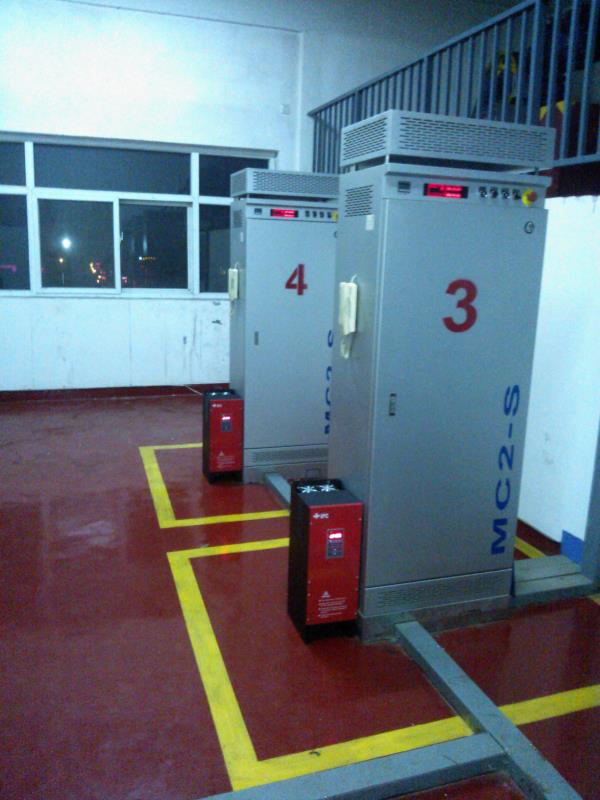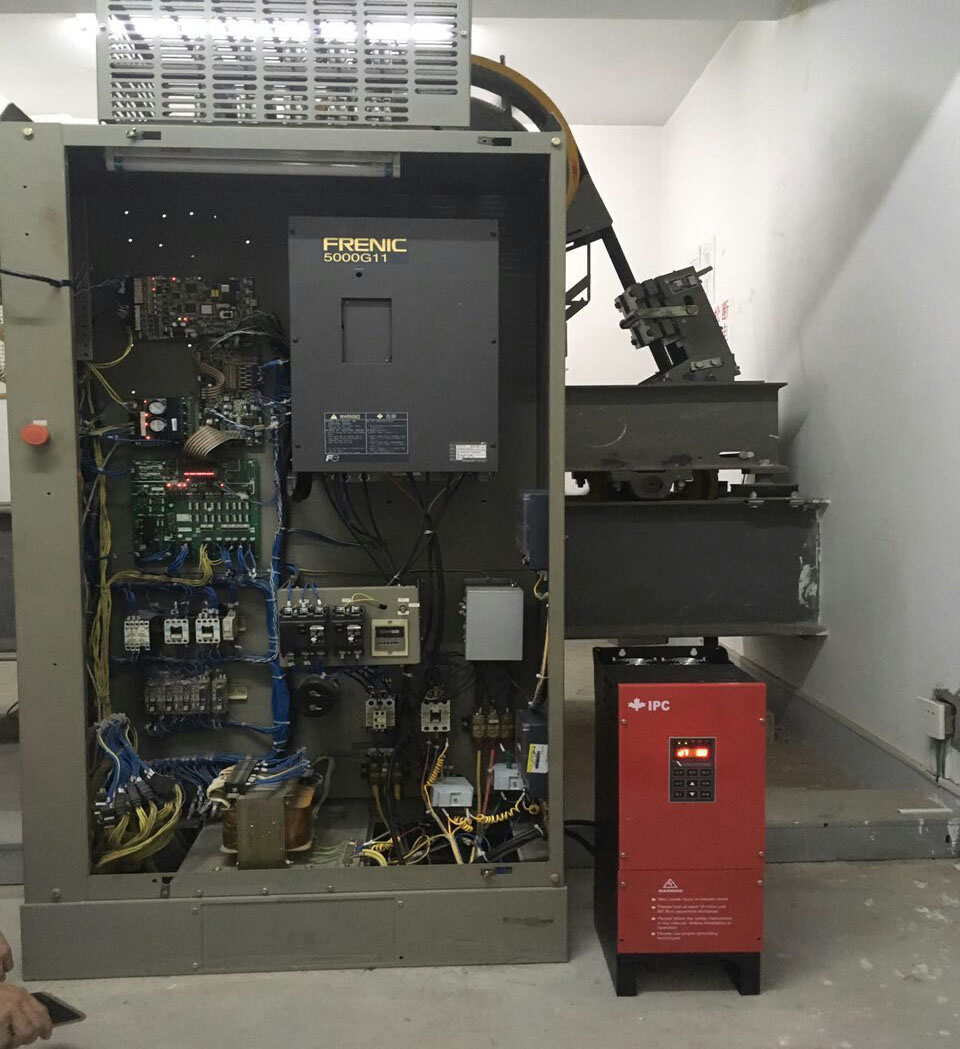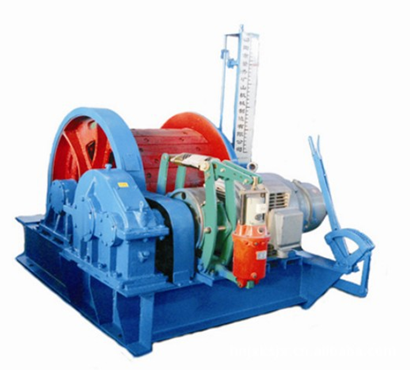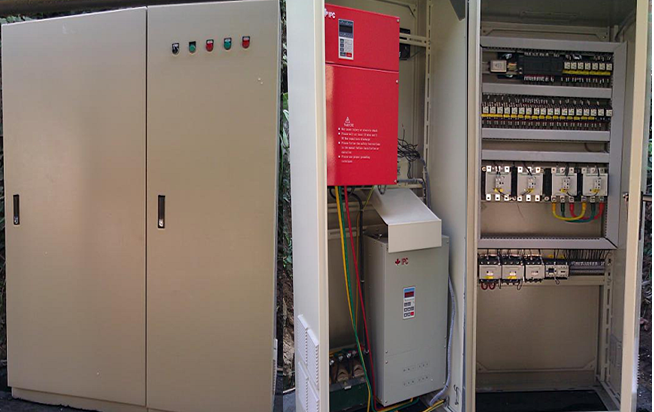3. Energy saving transformation system for frequency conversion feedback of mine winch
After the transformation of the mine winch system, the motor of the mine winch lifting mechanism was infinitely variable speed, greatly improving the control performance of the lifting mechanism and reducing the huge impact on the motor and mechanical parts. At the same time, energy feedback will enhance the regenerative energy of the motor to be fed back to the grid, greatly saving electricity, reducing the ambient temperature of on-site equipment operation, and extending the service life of electrical equipment. The energy-saving renovation system has two control cabinets, consisting of a frequency converter and an energy feedback device PLC、 The specific functions of the contactor and other components are summarized as follows:
1. After the system transformation, the variable frequency feedback control mode of the motor can be freely switched with the original rotor series resistance power frequency control mode, and the two control modes are electrically interlocked to ensure the safety of the system operation.
2. After the system transformation, the original operation mode and habits of the mine winch will be retained, that is, the gear control and operation mode of the original cam controller will be retained. In this way, it will not affect the normal operation of the mine winch operator and ensure that the special equipment inspection of the mine winch is qualified.
3. The variable frequency feedback electrical control system of the lifting mechanism has multiple protection functions such as short circuit, overvoltage, overcurrent, phase loss, overload, and over temperature, to maximize the protection of the lifting mechanism of the mine winch.
4. The system adopts a frequency converter to drive the lifting mechanism motor. When the motor drives the potential load to be lowered, the motor will be in a regenerative power generation state. The energy feedback device will feed back the regenerated energy of the motor in the generating state to the power grid, ensuring the normal operation of the variable frequency system and greatly saving electricity.
4. System debugging
① Debugging of PLC programs and control circuits. After the equipment installation is completed, the control circuit is powered on and the main circuit is not powered on. Perform control circuit and PLC program debugging to ensure correct logic control of the control circuit and PLC, and normal operation of all components.
② Debugging of frequency converter.
Disconnect the mine winch motor from the reducer, and use V/F control mode for no-load operation of the frequency converter. Drag the motor to ensure stable and normal operation of the motor, and the output voltage and current of the frequency converter are normal.
Disconnect the mine winch motor from the reducer, and use a PG free vector control method for the frequency converter to perform rotational self-learning and obtain motor parameters. Then, the PG free vector control method is used for no-load operation, dragging the motor and adjusting the corresponding parameters to ensure stable operation of the motor. The output voltage and current of the frequency converter are normal.
Connect the winch motor to the reducer, and use PG free vector control for the frequency converter. Run the frequency converter with load to ensure stable motor operation.
③ Debugging of energy feedback device.
Conduct no-load and heavy load lowering tests on the mine winch, correctly set the feedback action voltage value of the energy feedback device, and ensure the normal operation of the frequency converter and energy feedback system.
④ The overall debugging and operation of the system.
The entire system undergoes overall testing to ensure that the mine winch is lifted and lowered without load, lifted and lowered under heavy load, the speed of each gear meets the requirements, the gear shifts are normal, and the frequency converter and energy feedback device operate normally. And conduct work and frequency conversion switching tests to ensure normal switching and normal power frequency operation.
4、 The Application Effect and Customer Evaluation of IPC Frequency Conversion Feedback Electric Control System in Energy saving Renovation of Mine Winches
The actual operation of the system has proven that the application of IPC variable frequency feedback electric control system in energy-saving renovation of mine winches does not change the original operation mode of the mine winches, and the original handbrake can be basically no longer used, simplifying the operation. The system runs stably and reliably, with excellent speed regulation performance and large starting torque and low-frequency torque output; When the mechanism is lowered, the excess electricity generated by the motor's regenerative power generation is fed back to the grid, greatly saving energy. The customer is very satisfied with the effectiveness of the IPC variable frequency feedback electronic control system in the energy-saving renovation of mine winches. After actual measurement, the IPC variable frequency feedback electronic control system can save more than 28% of electrical energy compared to the original mine winch winding motor rotor series resistance speed regulation method.
5、 Conclusion
The application of IPC frequency conversion feedback electronic control system in energy-saving transformation of mine winches has improved the automation level of winch equipment in the mining industry and accelerated the upgrading of industrial equipment in the mining industry. It has played a very positive role in improving the production capacity of the mining industry and ensuring its safety production.
More importantly, the mine hoisting winch equipment belongs to large-scale mining equipment, and its energy consumption accounts for a significant proportion of the total energy consumption of the entire mining production. Compared with the wound motor rotor series resistance speed control system, the variable frequency feedback electric control system can greatly save electricity, truly reducing production costs and generating economic benefits for the mining industry.













































